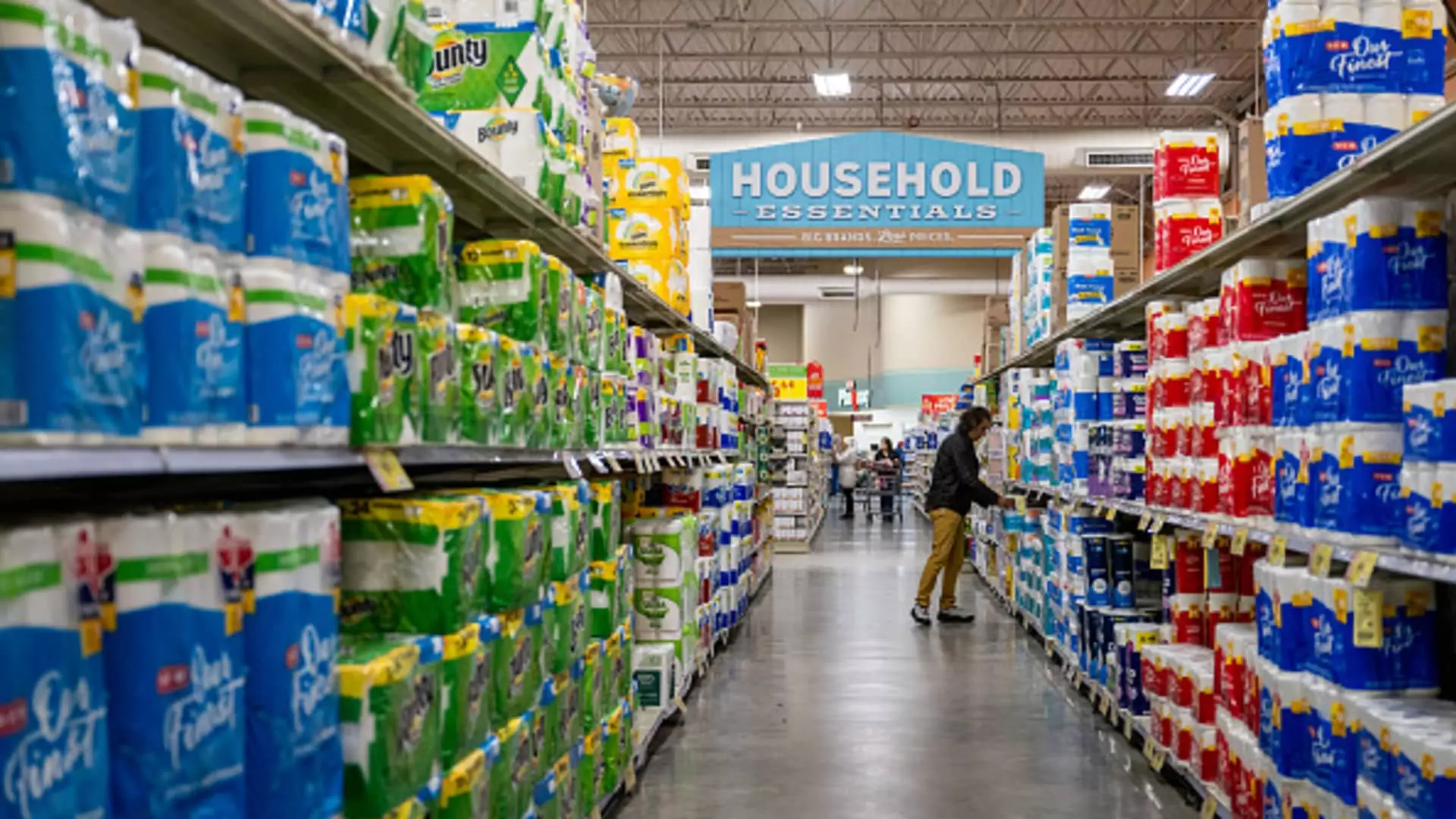As the Trump administration’s latest tariffs roll out, consumers brace for the inevitable price hikes on essential items, from coffee to toilet paper. The administration’s ambitious aim to reshore jobs may seem noble at first glance, yet a critical examination reveals the policy’s deep flaws. President Trump’s “America First” mantra ostensibly aims to bolster domestic production, but the short-sightedness of these tariffs threatens to push consumer costs up while potentially depriving many of their daily necessities. For a government that prides itself on Upward Mobility and an open market, it seems that the biggest unintended consequence of these tariffs will be a heavier financial burden on ordinary Americans.
Disparities in Domestic Capability
The irony cannot be overlooked. The Consumer Brands Association, which represents major corporations like Coca-Cola and Procter & Gamble, has signaled that many critical ingredients and materials simply cannot be sourced domestically. To push forward without offering exemptions for these imports showcases a fundamental misunderstanding of both the market and consumers’ needs. For every coffee drinker who enjoys their daily caffeine fix, there’s a sobering reality: the U.S. climate simply isn’t conducive to producing the kinds of ingredients people want. Coffee is a prime example, as American consumers rely almost entirely on imports from tropical countries. Hitting these imports with tariffs feels less like a protectionist strategy and more like self-sabotage.
The Ripple Effect on Household Staples
Consider the implications of increasing prices on commonly used household goods. Tariffs aren’t just an abstraction; they hit right at the heart of family budgets. Diapers, shampoo, and even toilet paper—these are not luxury items; they are necessities. By raising tariffs on raw materials like wood pulp and palm oil, the administration effectively places these items further out of reach for low- and middle-income families. Importing palm oil from Indonesia, for example, involves a daunting 32% duty, which manufacturers will undoubtedly pass along to consumers. What does this mean for an average family? Yet another financial strain in a world that has already seen rising living costs and stagnant wages.
The Stock Market Confusion
Interestingly, the stock market’s reaction to these tariffs tells a story of its own. Markets initially plunged, hinting at the anxiety gripping investors in response to the tariffs. Yet, in a classic case of “buy the dips,” stocks in the consumer staples sector surged, revealing a complex interplay of fear and opportunism. Procter & Gamble’s stock climbed over 1%, and Coca-Cola wasn’t far behind with a 2% increase. Investors are looking to hedge their bets on basic necessities, viewing them as “safe havens” amidst the chaos. However, this façade of resilience is misleading. Stock prices may rise temporarily, but the underlying economic realities indicate turmoil. Companies may announce “targeted price adjustments,” but when costs inevitably trickle down to consumers, it’s these very stocks that may drown under the weight of resultant public dissatisfaction and backlash.
A Historic Agricultural Disconnect
Further complicating matters is the reality that decades-long shifts in U.S. agricultural practices have rendered domestic production insufficient. For instance, over 90% of the oats consumed in America are imported from Canada because local acreage has seen a dramatic decline over the last century. The irony here is glaring; while the administration seeks to support local farmers, the facts indicate that our true agricultural capacity may not even meet current demand levels. In essence, the tariffs don’t only risk inflating prices but also harm our agricultural self-sufficiency and food security.
Is the Cost Worth the Benefit?
Ultimately, this whole tariff debacle underscores a painful question: who wins in this scenario? The aspirational vision of “American-made” goods does not stand up against the practical realities of a globalized economy. The only individuals truly benefiting may be those who are uninformed about the painful ripple effects of increased prices on everyday products. The reality is that people are going to feel this financially, and it can lead to a mix of frustration and distrust directed at both businesses and the government. The administration may have intended to instill hope, but it seems far more likely that these tariffs threaten to diminish what little economic security many families already possess.

